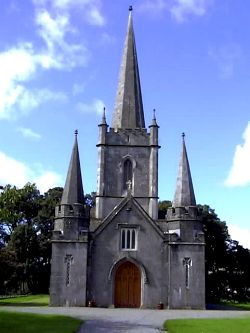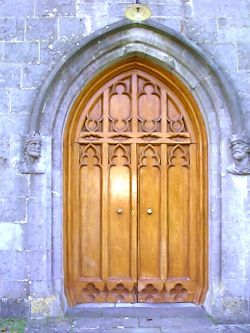
"St Pauls Church"
Français
Italiano
Español

|
"St Pauls Church" |
English
Français Italiano Español |

The Anglican parish church of Cahir was built to the design of John Nash, private architect to King George IV, at a cost of 2,307 pounds. (At this time far larger churches were built for less than half of this). Completed in 1818 it was consecrated on 4th February 1820, by the bishop of Waterford and Lismore, the Honourable and Right Reverend Richard Bourke. The reason for this delay was to test the massive spire on the foundations. As early as 1824 it was noted that the church "is a spacious stone structure of the Gothic order has a well proportioned spire and steeple; its interior finished in a chaste, yet superb style may vie in appearance with any church in the Kingdom". It is one of two known Nash designed churches to have survived, and one of the few of the Regency period to have most of itís origional interior layout.

The Interior of the church is virtually in tact, the most important features being the exquisite plasterwork ceiling and carved pine pews with individual doors. A proposal to enlarge the church in 1836 was mercifully adjourned, for it would have ruined Nashís design and resulted in a building far too large for present day needs. Thus, the seating capacity has remained at 200.
The church has a vast array of all type of memorials, predominantly wall-tablets, but also some stained glass windows. The finest window represents a Knight in full armour, with vizer raised, and is the work of the celebrated Sir Ninian Comper, (who designed the windows at Westminister Abbey) and dated from 1930.
The organ is of particular note and was installed by Peter Conacher and Co., in 1896, in a specially built room, which blends in splendidly with the church architecture. The main feature of the church yard is itís ony tomb - that of the Glengall Butlerís, who instigated the building of this, one of the premier architectural attractions of Cahir and a wide area beyond. Indeed it is acknowledged that architecturally speaking, St. Paulís church is the next most important building in Cahir Town after Cahir Castle.